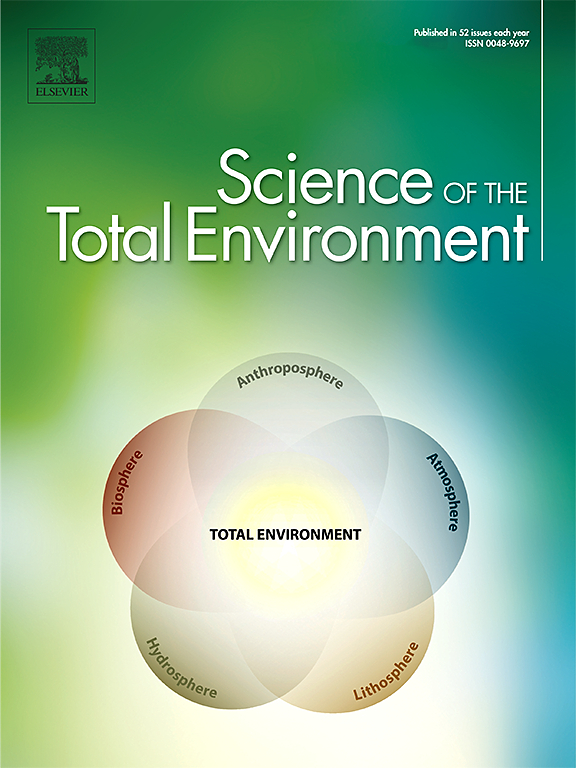Tackling microplastic contamination in sewage sludge: Optimizing organic matter degradation, quantifying microplastic presence, and evaluating ecological risks for sustainable agriculture
IF 8.2
1区 环境科学与生态学
Q1 ENVIRONMENTAL SCIENCES
引用次数: 0
Abstract
The omnipresence of Microplastics (MPs) is a growing global concern. Using sewage sludge as fertilizer for soil amendment can be a potential source of MPs in agricultural soil if sludge contains MPs. Sludge is a complex matrix rich in organic matter, which hinders MPs separation. For maximal organic matter degradation, in this study, the application of Fenton reagents optimized for (Fe2+/H2O2) molar ratios, i.e., 1/2, 1/4, 1/6, 1/8, and 1/10. The results show that a molar ratio of 1/2 of Fe2+/H2O2 can remove 86.6 % of the organic matter in the sewage sludge. The greenness of the optimized method was assessed and compared to available methods using AGREEprep software. The method achieved a greenness score of 0.61, significantly higher than the highest score of 0.45 among the previously reported optimized methods. This optimized method was used in the analysis of MPs in sewage sludge from 14 sewage treatment plants in Ahmedabad. Also, the ecological risks due to the application of such sludge in agriculture were assessed. MPs analysis reveals variability in MPs contamination ranging from 2.43 to 22.72 × 103 units/kg of sludge. Small-sized MPs (0.05–0.25 mm) constitute the highest proportion (65 %), predominantly comprising fibers and fragments. From a chemical composition point of view, six different types of MPs are identified, among which PU, Nylon, HDPE, and PP are the most abundant. Ecological risk assessment indicated extreme hazards in terms of the potential ecological risk index being higher than 1200 for all the sludge samples due to the abundance of MPs, specifically of PU and Nylon.

求助全文
约1分钟内获得全文
求助全文
来源期刊

Science of the Total Environment
环境科学-环境科学
CiteScore
17.60
自引率
10.20%
发文量
8726
审稿时长
2.4 months
期刊介绍:
The Science of the Total Environment is an international journal dedicated to scientific research on the environment and its interaction with humanity. It covers a wide range of disciplines and seeks to publish innovative, hypothesis-driven, and impactful research that explores the entire environment, including the atmosphere, lithosphere, hydrosphere, biosphere, and anthroposphere.
The journal's updated Aims & Scope emphasizes the importance of interdisciplinary environmental research with broad impact. Priority is given to studies that advance fundamental understanding and explore the interconnectedness of multiple environmental spheres. Field studies are preferred, while laboratory experiments must demonstrate significant methodological advancements or mechanistic insights with direct relevance to the environment.
 求助内容:
求助内容: 应助结果提醒方式:
应助结果提醒方式:


